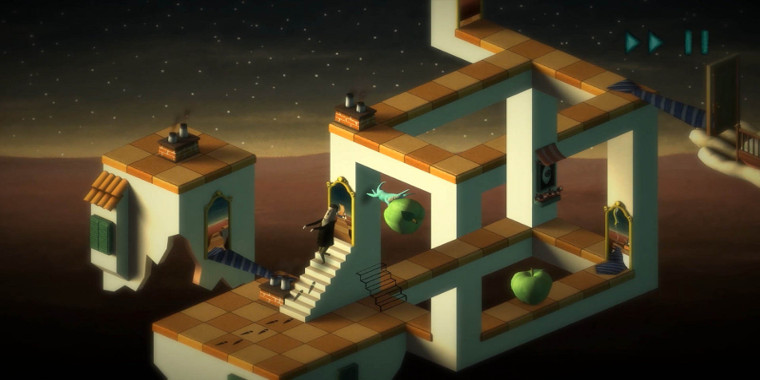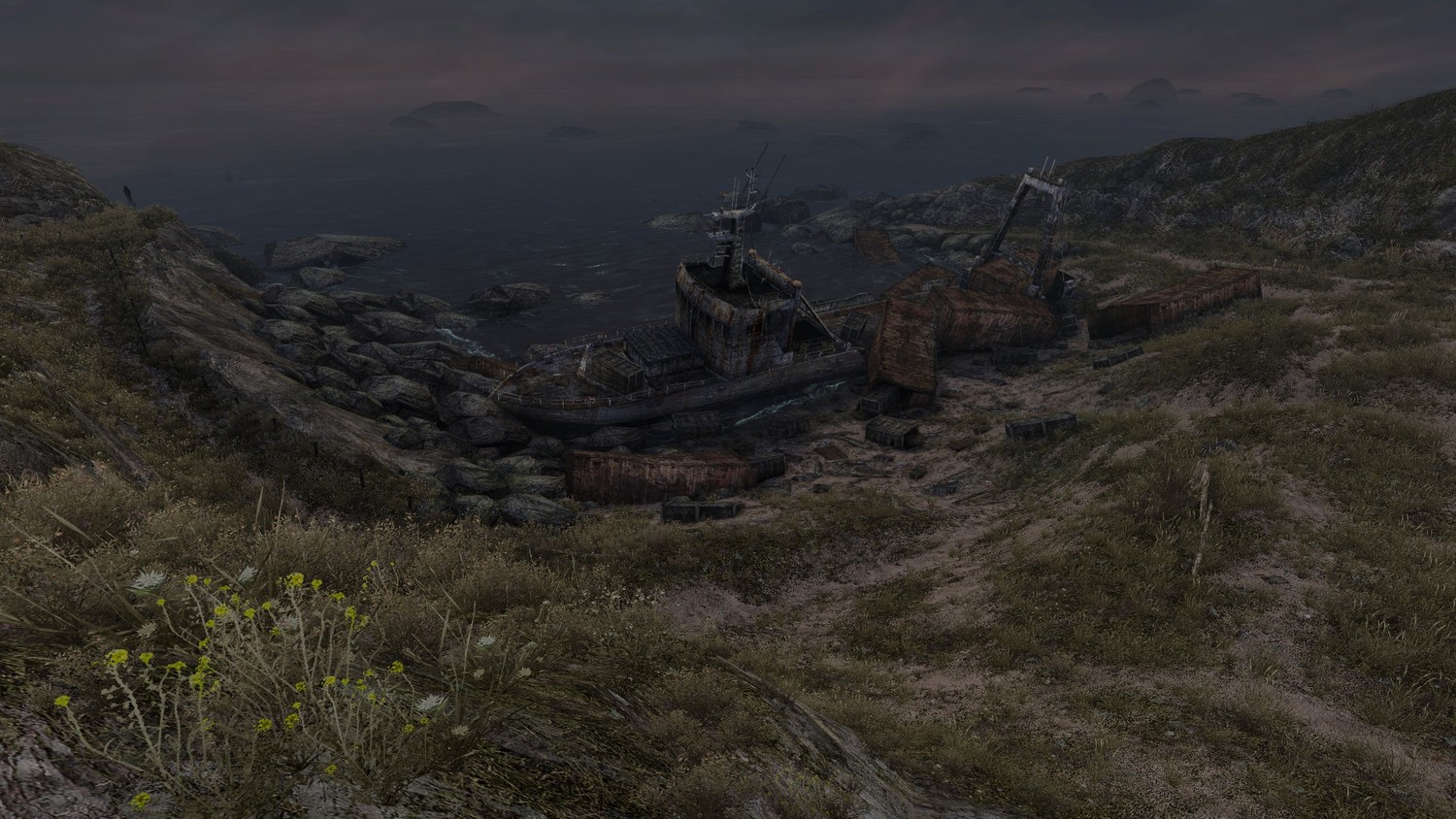
Review: Back to Bed
Posted by Eric G on August 25th, 2015 | 1 Comment | Tags: Back to Bed , Bedtime Digital Games , LOOT Entertainment
When it was announced a little while ago, I was excited to learn that Back to Bed was coming to PlayStation platforms. The surrealist inspired puzzler looked like just my sort of game. I’m a closet surrealism enthusiast, with a copy of “The Surrealist Manifesto” knocking around somewhere and Nadja hanging out on my bookshelf. I also quite fancy the works of Magritte, Dali, and M.C. Escher. So it’s no surprise that I absolutely love the presentation of Back to Bed. The art style, the music, and the cast of characters are all fantastic. I just wish this dreamy puzzler lasted a bit longer.
The main objective in every level of Back to Bed is to get Bob, a sleepwalker who looks like The Son of Man, back to bed. You play as his subconscious, a dog-like creature humorously named Subob. The bulk of gameplay is spent picking up and moving green apples (also visualized in The Son of Man) in order to divert Bob’s path. Each time he hits a wall or apple, he turns right. It’s not a new mechanic, but it works thematically and practically. If Bob falls off of the level, he simply starts at the beginning, falling into place and walking his predetermined path. You can speed up the game by holding a button, a welcome inclusion considering the slovenly pace that Bob walks at.
Later on in the game, a few more objects, obstacles, and twists appear. There are stairs that connect the floor to a wall. If you walk up them, you can tramp around on the walls (which usually have movable objects on them) and/or drop onto other walls in the level. A fish can be laid down as a bridge. Clocks, dogs, a nasty hole in the ground, and whaleroad trains will wake Bob up, which restarts (and reloads) the level. Finally, there’s a steamboat stack with lips that will blow Bob a few tiles while he maintains his walking direction. The character design is wild. Chess pieces are flying around or perching on tiles; clocks are melting in the backgrounds of some levels; mirrors are actually blinking eyeballs. The entire package is surreal, for sure, which is great considering the medium – video games – being used as a canvas. What I didn’t fall in love with is the progression of puzzle design throughout the game.

The game starts out simply enough, with a narrator who sounds like he’s in the Red Room from Twin Peaks guiding you through the first few levels. The addition of the stairs and wall-walking sparked something deep in my belly – I think it was excitement/joy. After about an hour, though, I found that I had beaten all of the basic levels and had only seen the stairs a few times. The same goes with a few other elements. The floor monster seemed like a decent obstacle, but I only came across it twice, maybe three times. In two or three of the later levels, you have to use the fish to create an Escher-like impossible bridge across a gap. The first time this was required, it took me a minute or two to figure it out. After that, it didn’t feel inspired or nifty at all. It felt like I was just going through the motions. There’s another level where you use the apple as a bridge that Bob has to walk on. That only happens once. In another level, you actually have to let Bob fall off of the side so that he respawns and lands on a fish bridge that you planted while he was busy jumping. These are all examples of good puzzle progression; eliciting the ‘a-ha!’ feeling that great puzzle games do so consistently. Back to Bed introduces the ‘a-ha!’, then fails to build on it or use it in a new way. There must be a whole breadth of puzzles possible with wall-walking. Instead, you’re almost always walking on walls to simply fetch objects.
In the end, I enjoyed Back to Bed. There’s an underlying narrative about the conforming shackles of society and the freedom of dreams… I think. The story cards that show up every few levels look wonderful. Nightmare mode is sufficiently challenging; probably the best part of the game. (It unlocks after you breeze through the first 30 puzzles.) In Nightmare mode, you’ve got to direct Bob to pick up one or more keys before having him head for the bed behind a now-locked door. The level layouts are the same, but the addition of keys forces you to play them way differently this time around. Most of my time with the game was spent on the Vita, which sports some rough-around-the-edges character models and some framerate skips while fast-forwarding. The game certainly looks and runs better on the PS4. Loading times are also much faster, which will help you out on some of those dog levels where you may have to retry a half-dozen times. Excellent presentation, decent puzzling. If you’re a fan of the far-out, it may very well be worth your hard earned greenbacks.
A copy of this game was provided by the publisher for review purposes. For more info on our review policy click here.
General Info
- Developer: Bedtime Digital Games
- Publisher: LOOT Entertainment
- Platforms: PS Vita, PS3, PS4
- Release Date: August 2015
- Players: 1
- Ratings: Everyone 10+, PEGI 3
Score:
What I Like:
- Surrealist theme
- Voice acting
What I Dislike:
- A bit on the easy side
- Puzzle development flow




























